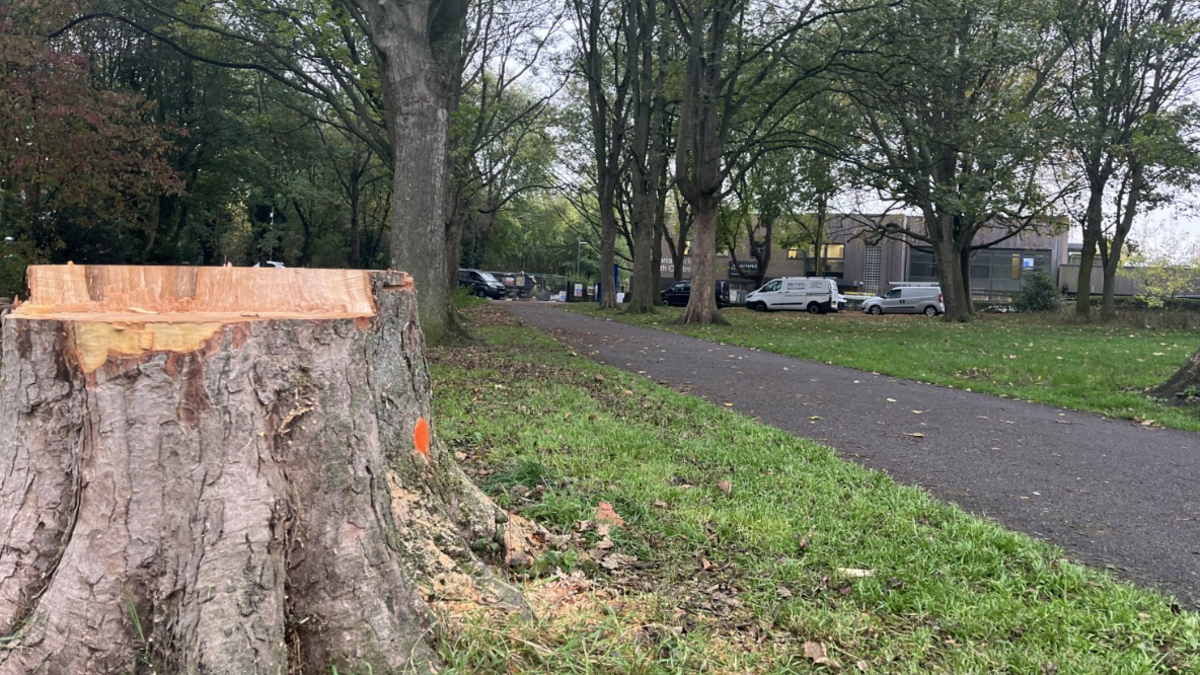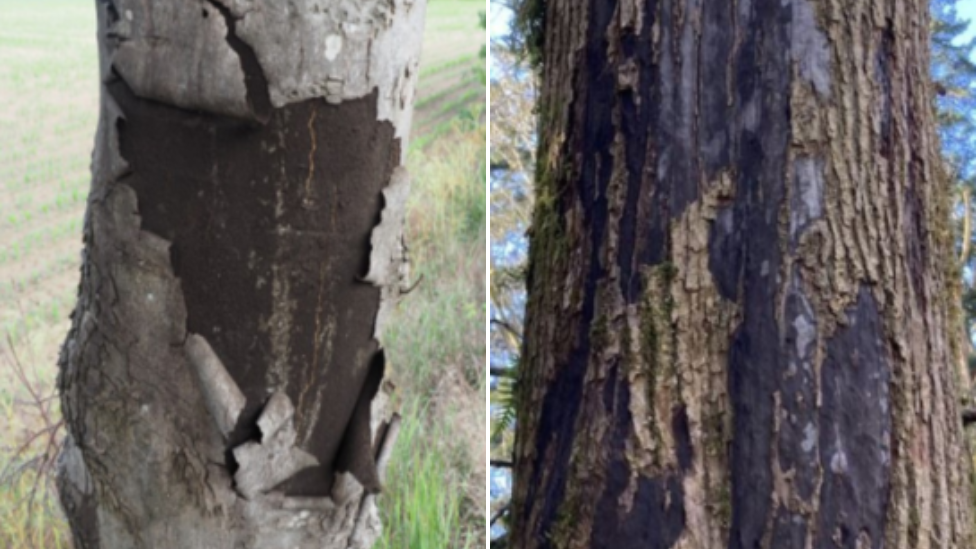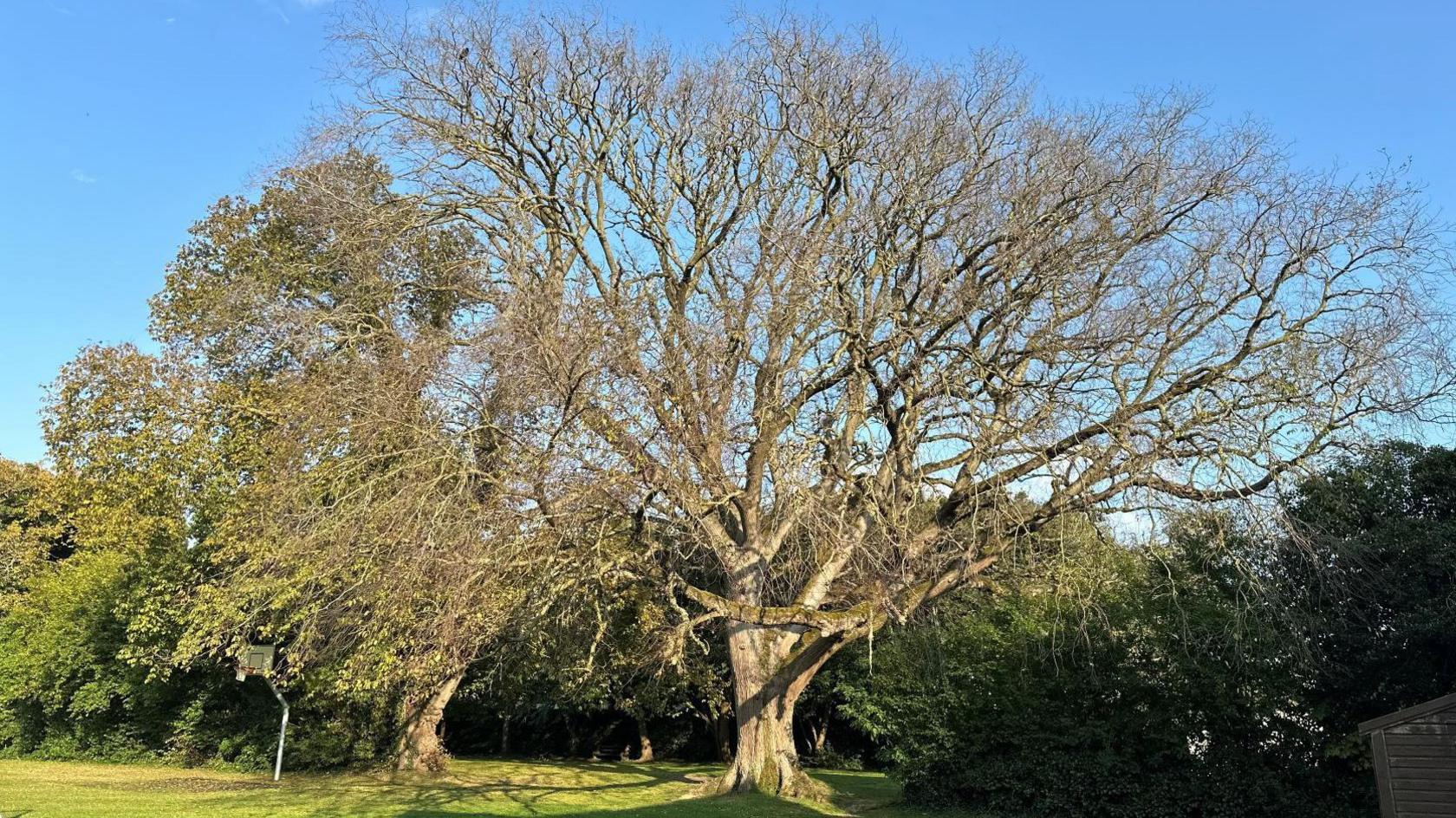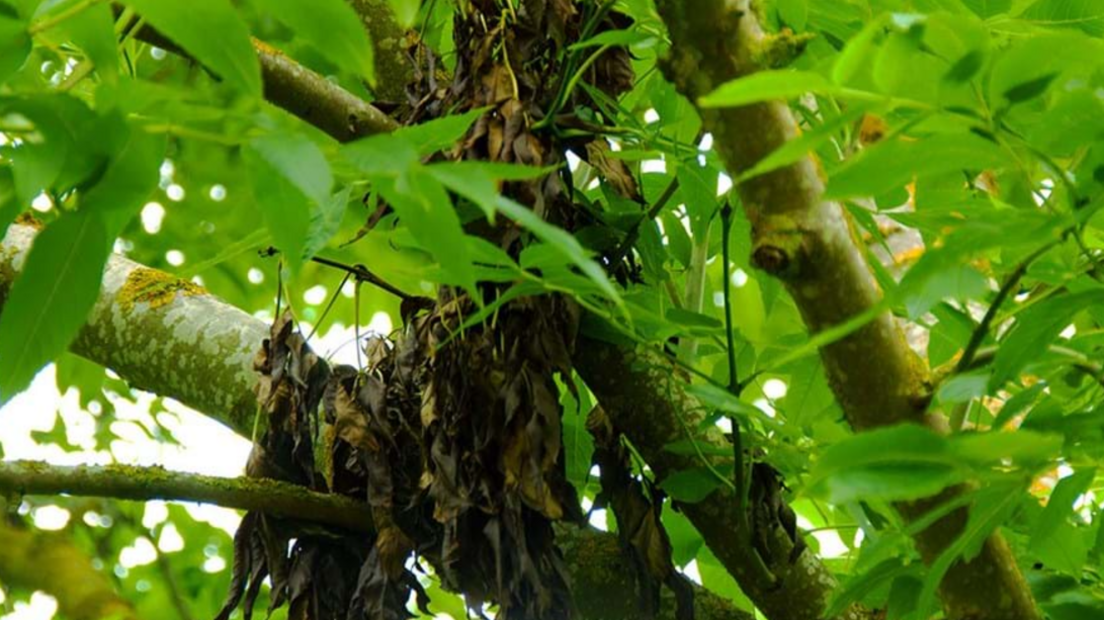Trees felled to halt spread of harmful sooty spores

Infected trees have been marked with an orange spot to show they are to be felled
- Published
Trees in a park in Leicester are being felled because they have become infected with a harmful fungal spore that turns them black.
Leicester City Council said 17 maple trees in Victoria Park were to be removed because they had cryptostroma corticale, commonly known as sooty bark disease.
Experts said the removal of infected specimens was needed to try to stop the spores spreading and reduce the risk of harm to people who might breathe them in.
The felling work is to be carried out over the next two weeks, the council said.
A spokesperson for the authority said: "Sadly, a number of mature maples in Victoria Park have succumbed to sooty bark disease and these trees must be felled to prevent the disease from spreading and to prevent the dispersal of fungal spores, which can be harmful to human health.
"Sooty bark disease is a fatal fungal infection that attacks maple trees, causing rapid wilting, defoliation, crown dieback and, inevitably, death."

The disease causes black soot-like patches to appear on tree trunks
According to Forest Research, which is part of the Forestry Commission, the fungal disease has been present in the UK since 1945 and was probably imported from North America during World War Two.
"It is most often noticed after periods of hot weather when extensive black sooty patches are revealed beneath the bark of affected trees," Forest Research said.
"It is a disease which needs high temperatures for extended periods of time and therefore is expected to become more prevalent in the UK if the pattern of above-average summer temperatures continues.
"The bark falls away to reveal this black powdery layer and the spores are dispersed aerially.
"Once these spores have been released, the remaining fungal surface has a greyish appearance."
The council said it would plant 30 trees, of a species resistant to the fungus, in the area for each one that was lost.
Get in touch
Tell us which stories we should cover in Leicester
Follow BBC Leicester on Facebook, external, on X, external, or on Instagram, external. Send your story ideas to eastmidsnews@bbc.co.uk, external or via WhatsApp, external on 0808 100 2210.
Related topics
- Published14 August

- Published28 November 2024
